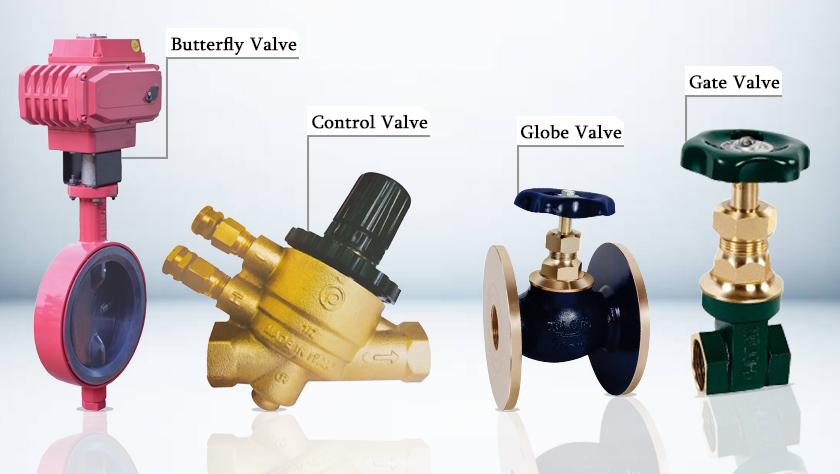Picking the Right Control Valves: An Overview to Optimum System Efficiency
Picking the Right Control Valves: An Overview to Optimum System Efficiency
Blog Article

Maximize Power Cost Savings and Comfort With Advanced Building Automation Controls
In the realm of contemporary style and facility management, the integration of sophisticated structure automation controls stands as a critical advancement. By taking advantage of the power of automation, structures can adjust, respond, and evolve in means that were when inconceivable.
Energy Performance Conveniences
Energy performance benefits can dramatically decrease power consumption and operational expenses in buildings. Energy-efficient systems, such as sophisticated structure automation controls, can maximize the usage of sources like cooling, lights, and home heating, leading to reduced energy costs over time.
Additionally, enhanced power effectiveness can prolong the life-span of structure devices and systems. By running extra efficiently, heating and cooling systems, lighting components, and other structure parts experience much less damage, causing lowered upkeep and substitute costs. Additionally, energy-efficient structures frequently regulate greater residential property worths and rental rates, giving lasting monetary advantages to owners.
Additionally, energy efficiency can enhance occupant comfort and performance. Properly regulated interior atmospheres with ideal illumination and thermal conditions create an even more favorable and pleasurable work space, leading to enhanced worker complete satisfaction and performance. Overall, the power effectiveness benefits related to innovative building automation controls are complex, incorporating cost financial savings, ecological stewardship, and occupant health.
Enhanced Comfort Control
Enhancing convenience control in building atmospheres needs an innovative combination of sophisticated automation systems for optimum occupant health. By utilizing innovative structure automation controls, facilities can tailor the indoor setting to fulfill the particular demands and preferences of owners. control valves.
By integrating these advanced controls, structures can not only enhance convenience but also boost energy effectiveness by optimizing system procedures based on real occupancy and use patterns. Eventually, focusing on occupant convenience via advanced automation systems leads to a more enjoyable and healthier indoor atmosphere.
Functional Efficiency Improvements

In addition, the application of real-time surveillance and analytics tools allows building operators to determine power inadequacies and operational abnormalities quickly. By continuously keeping track of energy usage patterns and system performance metrics, changes can be made in real-time to enhance energy consumption and ensure peak functional efficiency. control valves. In addition, integrating need feedback approaches right into structure automation controls can even more enhance operational effectiveness by dynamically readjusting energy use based on grid problems and rates signals
Indoor Environment Optimization
Efficient interior climate optimization is an essential element of building automation controls, making certain passengers' convenience and wellness while optimizing energy cost savings. By making use of innovative sensors and controls, constructing automation systems can continuously readjust and check temperature level, moisture article levels, air high quality, and air flow to develop an optimal interior setting. Keeping comfy and constant conditions not just improves resident contentment yet also improves efficiency and general health.
Interior environment optimization additionally plays a crucial role in power effectiveness. By fine-tuning home heating, air conditioning, and air flow systems based on real-time data and occupancy patterns, developing automation controls can dramatically minimize energy intake - control valves. For instance, carrying out strategies such as demand-controlled air flow and thermal zoning can help lessen power waste while ensuring that each area of the building obtains the necessary conditioning.

Sustainable Atmosphere Development
Structure automation manages not only optimize interior environment problems for energy performance and resident convenience but also lay the structure for developing a lasting atmosphere through critical management of systems and resources. By incorporating advanced building automation innovations, such as sensors, actuators, and smart software application, centers can check and readjust power usage in real-time to decrease waste and decrease their carbon footprint. These systems enable predictive upkeep, recognizing index possible problems prior to they intensify and maximizing devices performance to improve durability and effectiveness.
Additionally, lasting environment production prolongs past energy monitoring to include water conservation, waste decrease, and indoor air top quality improvement. Structure automation controls can regulate water use, detect leakages, and guarantee proper waste disposal practices, adding to overall sustainability efforts. Furthermore, by managing and monitoring air flow and filtration systems, these innovations boost owner wellness and performance while reducing power usage connected with cooling and heating procedures.
Final Thought
In final thought, advanced building automation regulates offer considerable benefits in regards from this source to power cost savings, convenience control, operational effectiveness, indoor climate optimization, and producing a lasting environment. By executing these controls, structures can achieve optimal performance while lowering energy intake and boosting resident comfort. It appears that using sophisticated automation modern technology is important in boosting structure efficiency and creating a more lasting future.
Power efficiency advantages can dramatically reduce energy usage and operational expenses in structures. On the whole, the energy efficiency advantages associated with advanced structure automation controls are diverse, incorporating expense savings, environmental stewardship, and occupant health.
Additionally, incorporating need reaction methods into building automation controls can even more boost operational performance by dynamically readjusting power use based on grid conditions and prices signals.
Building automation manages not just optimize indoor climate conditions for power efficiency and occupant convenience however also lay the structure for producing a lasting setting through critical monitoring of sources and systems.In verdict, progressed structure automation controls offer significant advantages in terms of energy financial savings, convenience control, functional performance, indoor climate optimization, and creating a sustainable setting.
Report this page